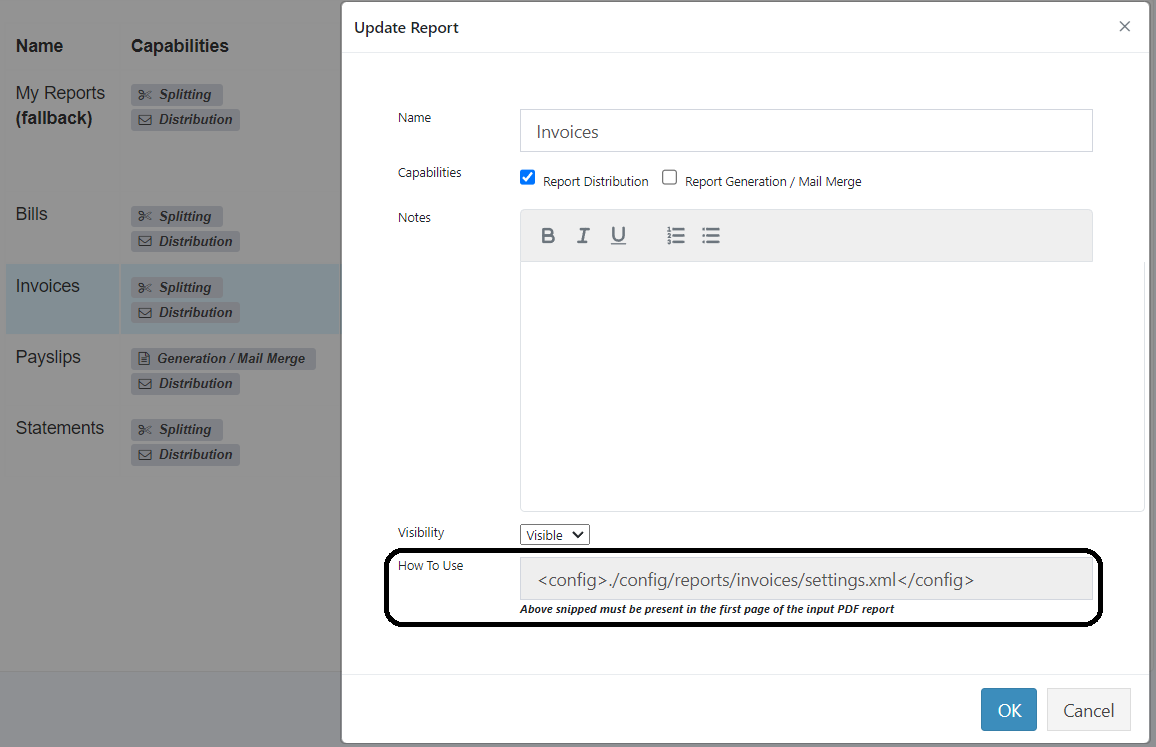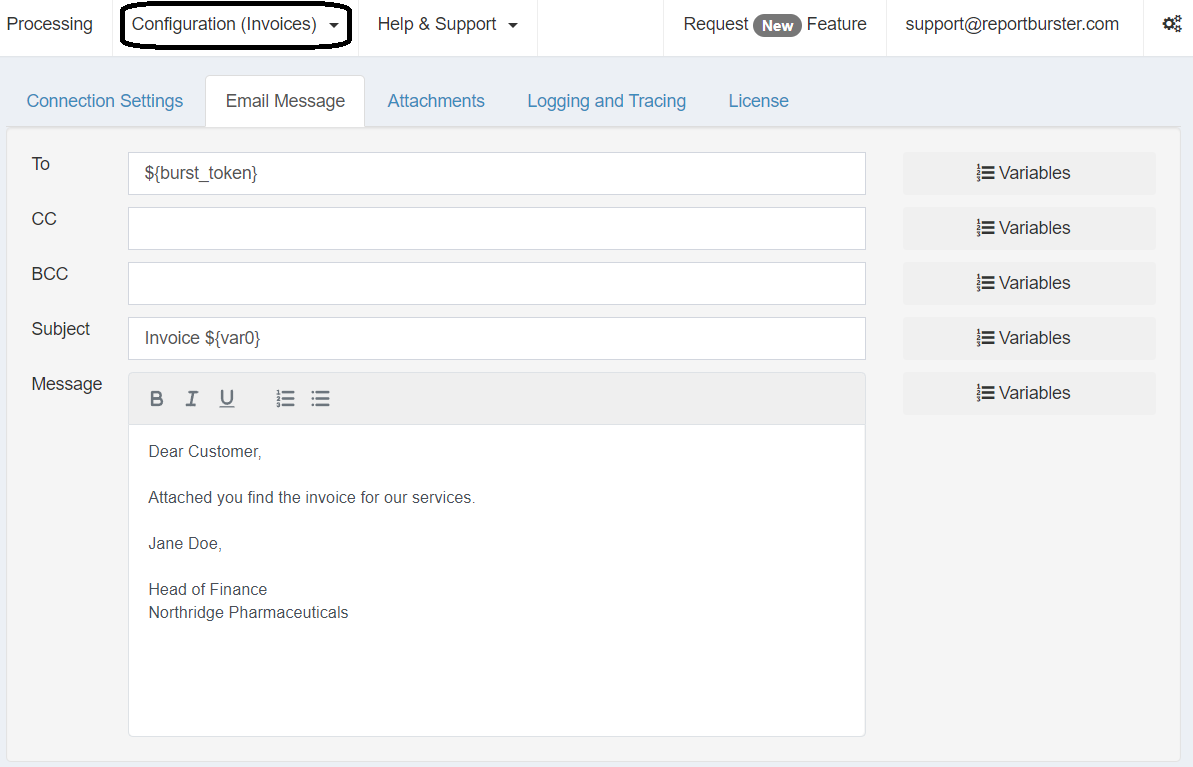ReportBurster Configuration Templates
Configure different settings for separate report types using ReportBurster's configuration templates feature.
Table of Contents
- Introduction
- Process PDF Reports Using a Custom Configuration File
- Process Excel Reports Using a Custom Configuration File
- Create, Update and Delete Configuration Templates
Introduction
ReportBurster can use different configuration settings for each separate report type. This capability allows you to use unique email subjects, message bodies, or burst file names when processing different types of reports.
By default, if you don't provide a custom configuration file, ReportBurster processes all reports using the default configuration settings saved in the ./config/burst/settings.xml file. While this works for most situations, sometimes you need to process different report types with their own specific configuration settings.
Use case example:
You need to burst and email several types of financial documents to customers, specifically:
- Invoices
- Bills
- Statements
Each report type should be delivered to customers using an email subject and text specific to the report type being distributed.
You can achieve this requirement by defining:
- Invoices email subject and text in
./config/reports/invoices/settings.xml - Bills email subject and text in
./config/reports/bills/settings.xml - Statements email subject and text in
./config/reports/statements/settings.xml
ReportBurster will process and email each different report type using its own distinct set of configuration settings.
Process PDF Reports Using a Custom Configuration File
When bursting PDF reports, ReportBurster checks the first page of the report for a custom defined configuration file by looking for a pattern like:
<config>path-to-the-custom-settings-file.xml</config>
For example, to process the Invoices report using a custom configuration file, the first page of the input invoices.pdf report should contain:
<config>./config/reports/invoices/settings.xml</config>
Note: You can also use the shorter (but less expressive) pattern: <c>path-to-the-custom-settings.xml</c>,
For example: <c>./config/reports/invoices/settings.xml</c>
Process Excel Reports Using a Custom Configuration File
When bursting Excel reports, ReportBurster checks for a custom configuration file defined in the configFile column from the burst metadata sheet. If no custom configuration file is found, ReportBurster will burst the report using the default ./config/burst/settings.xml configuration file.
Here's how Excel reports should be configured to implement the example requirement (invoices, bills, and statements):
In the burst sheet of invoices.xls, define the custom configFile like this:

or ./config/reports/bills/settings.xml for bills reports and ./config/reports/statements/settings.xml for statements reports.
Create, Update and Delete Configuration Templates
In ReportBurster's main top menu, select Configuration -> Manage -> Reports

Each configuration template is saved in a different configuration file. For example, Invoices configuration template will be saved to a ./config/reports/invoices/settings.xml file, while Statements configuration template might be saved in a ./config/reports/statements/settings.xml file.
Once the new configuration templates are created, they become available throughout the ReportBurster user interface.

For each different configuration template (i.e. report type) you can modify the specific settings that need to be
different for that report type such as the Burst File Name, Output Folder location

or the Email Subject and the Email Message.

Create Similar Configuration Templates

To efficiently create similar configuration templates, select an existing template from the list and click the Duplicate button.
This copies all settings to your new template, allowing you to modify only what needs to be different for each report type
(such as the template Name, Email Subject or output Burst File Name) while preserving common settings like email
server configurations.